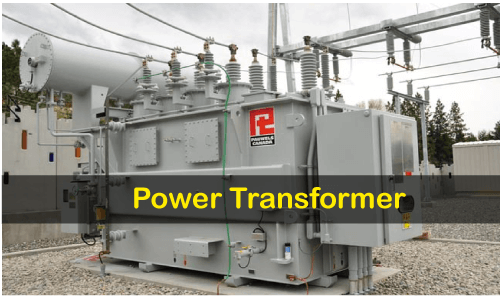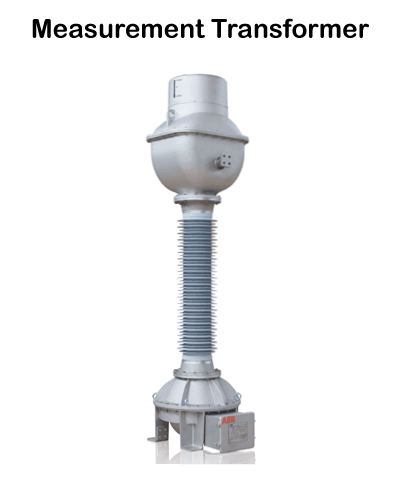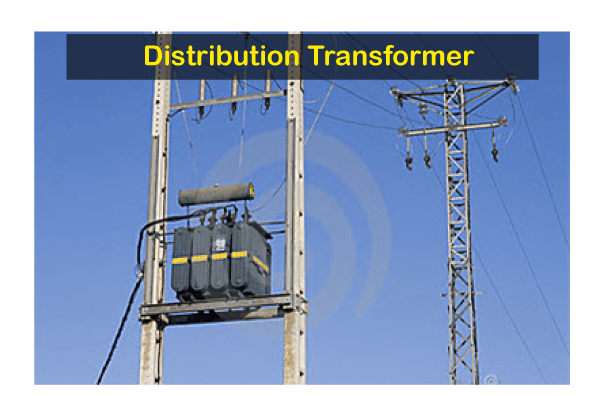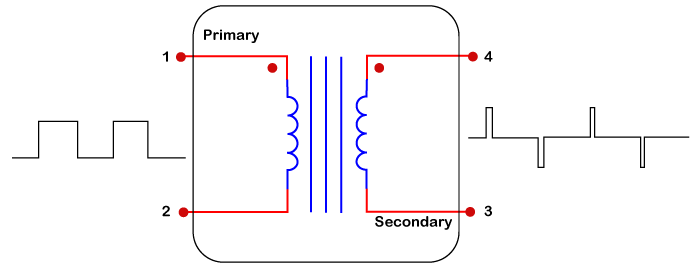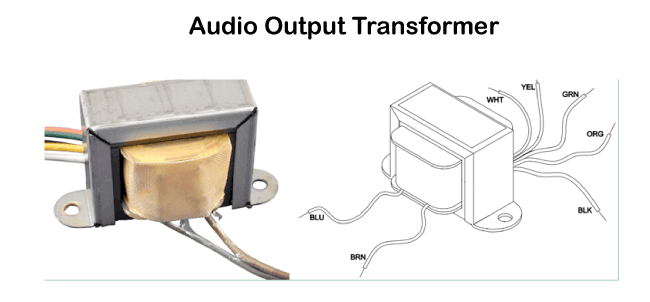Types of TransformerThe transformer is one of the oldest innovations in the electrical and electronics field and is now a widely used device in almost every electrical network circuitry. In general, most people know that transformers are huge heavy objects typically found in the corners of streets, causing random buzz noises and often spitting sparks. However, it is not the only type of transformer. We are reclaiming the benefits of transformers in many electrical devices, whether we realize it or not. Even our phone or laptop charger has a small transformer with an entirely different mechanism. Various transformers are used in electrical power systems for various purposes such as electrical power generation, distribution, transmission, and utilization. In this article, we are discussing all such major types. Before discussing the types of transformers, let us first briefly discuss the definition of a transformer: What is a Transformer?A transformer primarily refers to devices designed for the transmission of electrical energy at required voltage levels. The transmission current is usually an alternating current (AC). A transformer is mainly used between circuits when there is a need to increase or decrease the supply voltage without changing the current frequency. In other words, a transformer is usually a voltage control device designed primarily to transmit and distribute the alternating current. Transformers mainly operate on two principles, such as mutual induction and electromagnetic induction. The transformer's idea was first introduced in 1831 by Michael Faraday, later adopted by former scientists and scholars. The main purpose of designing transformers was to establish a balance between power generated at very high voltages and consumption at very low voltages in the target devices. 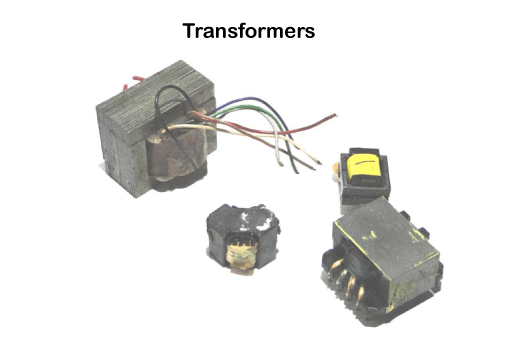
Components of a TransformerWhen it comes to construction, knowledge of a transformer's basic components is the most essential. The major components of a transformer mainly include the bobbin, core, windings, and insulation agents: BobbinThe bobbin is the fundamental part of any transformer. It mainly provides a spool and allows us to wind the windings around it. It also helps in holding the core in a fixed position. It is typically composed of using a heat-resistant plastic material. Furthermore, it can have metal pins that can be used to solder the windings-ends if there is a need for mounting it to a PCB. 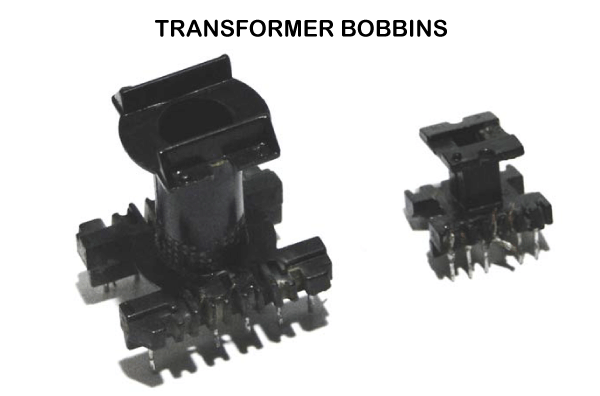
CoreThe core is another essential part of the transformer and comes in different shapes and sizes depending on the requirements. It primarily provides support to the winding wrapped in the transformer. Additionally, the core helps to achieve a low reluctance path for magnetic flux flow. It is the magnetic properties of the core that define the electrical properties of the transformer. The core composition usually determines factors such as operating voltage, power, current, etc. 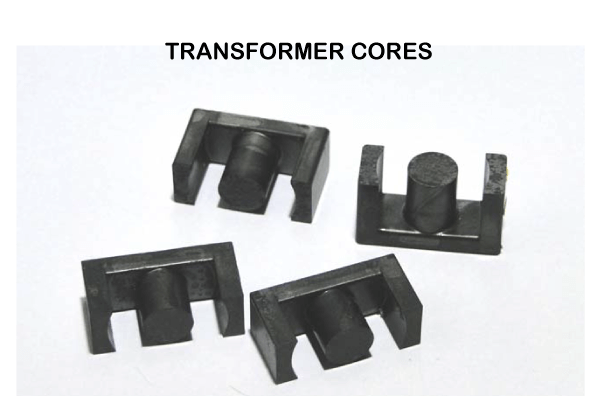
WindingsWindings refer to the set of wires wrapped over the transformer cores. Generally, the wire used in the construction is a solid, enameled copper wire. The copper wire is preferred over other wires because it is strong and thin, and therefore, leaves no unnecessary empty spaces due to plastic insulating sheaths. Moreover, the copper wires have higher conductivity which typically minimizes the losses. There are usually two types of windings in transformers, such as the primary winding (to input supply current) and the secondary winding (to take output current). 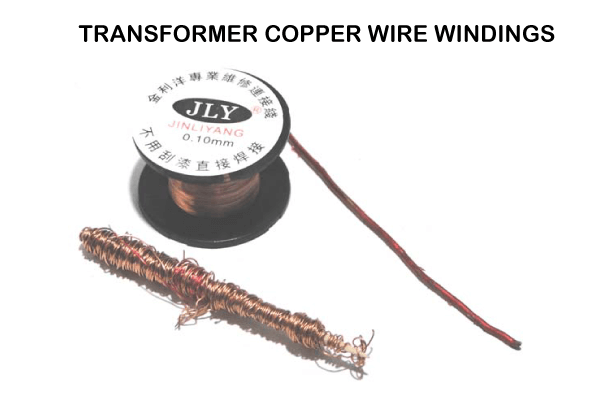
Insulation AgentsInsulation in transformers is as important as any other part because it mainly helps separate the wrapped windings from shorting the circuits. This eventually facilitates mutual induction. Insulation agents indirectly play a key role in influencing the stability and durability of transformers. There can be different insulation materials in transformers, such as insulating oil, insulating paper, insulating tape, wood-based lamination, etc. Types of TransformerTransformers are quite common in many sectors, such as distribution, power generation grids, electric energy consumption, and transmission. Therefore, different transformers are based on different categories; each type has a unique structure, construction method, functions, and applications. However, their types can be broadly classified based on the following categories:
Let us now understand each type in detail: Classification of Transformer based on Voltage LevelsTransformers are designed in multiple types of construction. One such construction method includes how the coil's primary side's voltage level is converted to the secondary side. These transformers typically have no electrical connection between both sides, but the independent coils conduct the electricity by the electromagnetic flux. Based on the voltage range, transformers are mainly divided into the following three types: Step-Down TransformerThe step-down transformers are mainly used to convert the primary voltage levels to the lower voltages across the secondary coil. That is the reason they are called step-down transformers. The conversion of voltages is made possible by changing the number of windings in both coils. The total number of windings in step-down transformers is higher on the primary side than the secondary side. These transformers are one of the basic requirements in the power section. These transformers are mostly used in power adapters and mobile chargers. 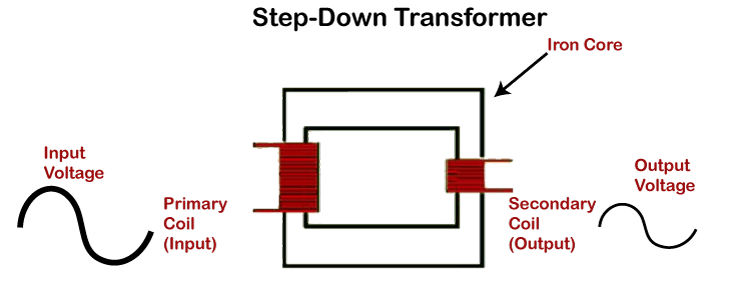
Step-Up TransformerStep-up transformers are just the opposite of step-down transformers. Step-up transformers help convert the low primary voltage levels to the higher voltage levels across the secondary coils as the output; thus, the name is a step-up transformer. In step-up transformers, the total number of windings on the secondary side is higher than the primary side. These transformers are mainly used in applications where the low voltage is changed to a relatively higher voltage-for example, inverters, stabilizers, etc. 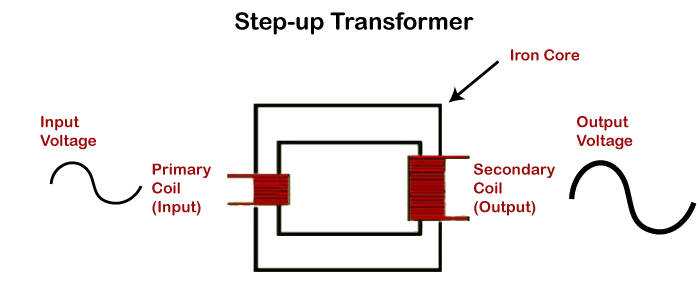
Isolation TransformerIsolation transformers neither increase nor decrease the voltages from the primary side to the secondary side. The voltage remains the same on both sides. In isolation transformers, the number of windings in the primary and secondary sides is also the same. These transformers help isolate the voltages. More specifically, they help in canceling noise transfer from the primary side to the secondary side. Besides, they are also used for safety reasons. 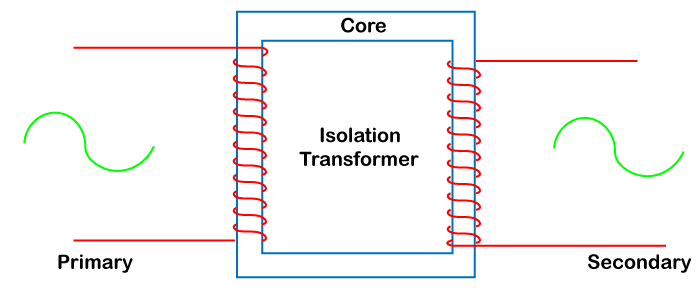
Classification of Transformer based on the Medium used in CoresThe transformers mainly transmit the energy from the primary side to the secondary side by conducting electromagnetic flux via the core medium. There are different materials used as cores to achieve different flux densities. Based on the core material, transformers are mainly divided into the following types: Iron Core TransformerIron core transformers are transformers in which the core material is iron. These transformers contain multiple soft iron plates wrapped in primary and secondary windings. Since iron has excellent magnetic and conductive properties, the iron core transformers have a high flux linkage. This further results in getting a higher efficiency. These transformers are one of the most commonly used transformers and heavier in weight. 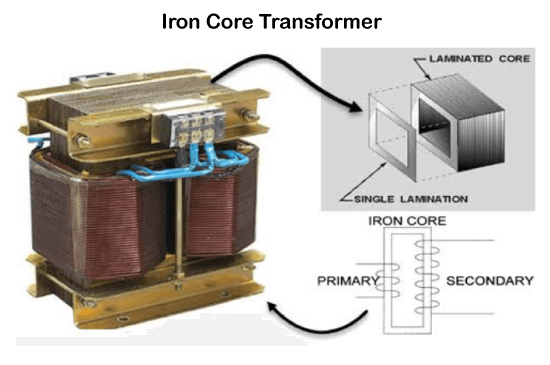
Ferrite Core TransformerFerrite core transformers are constructed using a ferrite as a core material. Ferrite has a high magnetic permeability. These transformers are mainly used in high-frequency applications because they drastically reduce the losses in such applications-for example, SMPS (Switched Mode Power Supply, RF related applications, etc. Ferrite core transformers are primarily used in electronics instead of electrical applications. They are designed in various shapes and sizes to fulfill specific purposes. 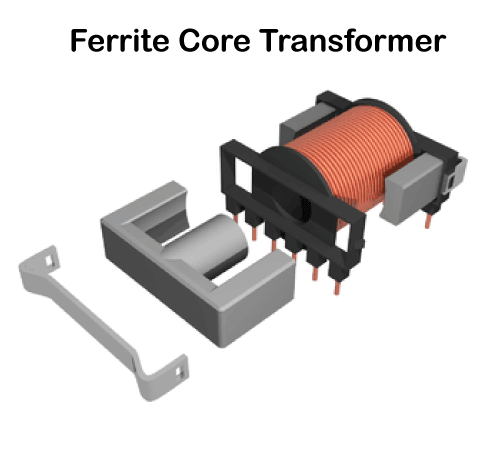
Toroidal Core TransformerToroidal core transformers are transformers in which the core material is in a toroid shape. The cores can be made of either ferrite or iron. In simple words, toroids are simple rings or doughnut-shaped core material. The toroidal-shaped core is an efficient way for enhanced electrical performance. Furthermore, it also provides high inductance, while the leakage inductance is low. Apart from this, the windings are relatively short, which also decreases the transformers' overall weight. 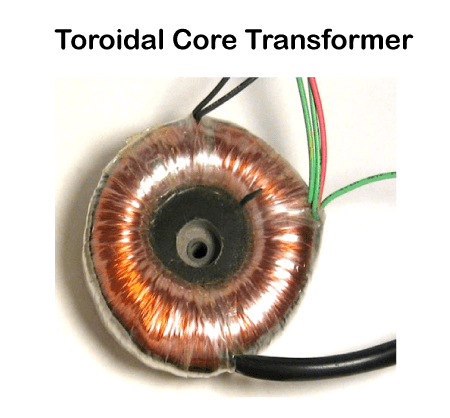
Air-Core TransformerAs the name suggests, the air core transforms have no physical magnetic core, and the flux linkage occurs completely through the air. In these transformers, the windings (primary and secondary) are wrapped on a non-magnetic strip. The alternating current is given to the primary coil, which further generates an electromagnetic field around it. Later, the secondary coil comes inside this magnetic field. Therefore, the secondary coil is induced with a magnetic field that later helps to power the load. Air core transformers work based on the Faraday law of induction. These transformers are mainly useful for portable electronics. For example, they generally help in wireless charging. The primary coil is attached inside the charger, while the secondary coil is fixed inside the corresponding device. 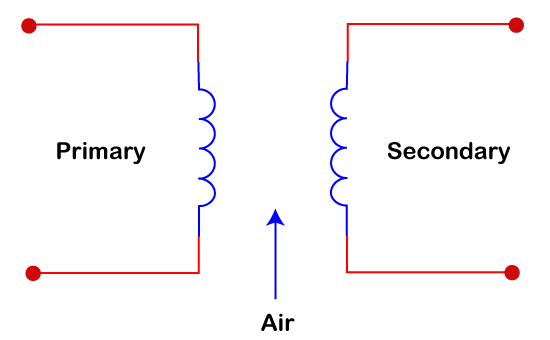
Classification of Transformer based on Winding ArrangementsBased on the winding arrangements, transformers are mainly divided into the following type: Auto Winding TransformerWhile standard transformers have windings placed in a separate position, auto winding transformers have both windings connected in series. Also, a center tap node can be moved accordingly on the body of the coil winding. This movement ultimately helps to vary the secondary voltage or output voltage from the primary voltage. These transformers are mainly used in power distribution and transmission-based applications, requiring frequent changes in high voltage lines. 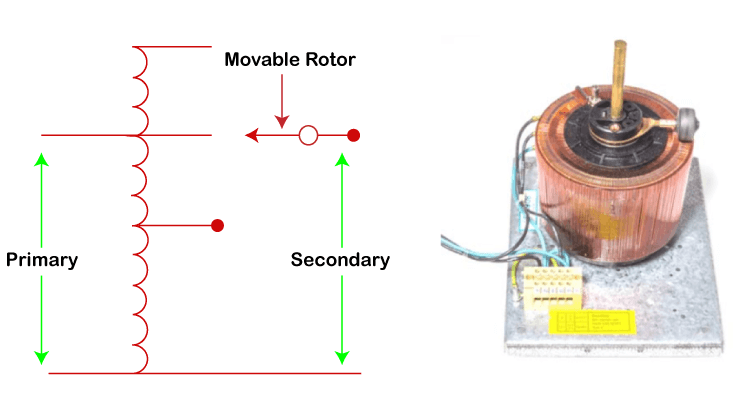
Classification of Transformer based on UsageMany transformers are designed for specific purposes in both the electrical and electronics sectors. These are termed the dedicated transformers used as step-down or step-up transformers based on the usage. Based on the usage, transformers are mainly classified into two domains: the power domain and the electronics domain. Power DomainTransformers used in a power domain is constructed to deal with power generation, distribution, and measurement. Transformers are the core part of this domain and help accommodate safe power conversion and efficient power delivery to the end-users. Transformers can be indoor and outdoor, but most of them are outdoor. Some such transformers are discussed below:
Electronics DomainIn electronics, some small-sized transformers can be fixed within the small devices. Also, various small miniature transformers are there mounted on PCB. Some such transformers in the electronics domain include the followings:
Applications of TransformerAlthough transformers have a wide range of applications, some of the most common are listed below:
Next TopicDebugging
|
 For Videos Join Our Youtube Channel: Join Now
For Videos Join Our Youtube Channel: Join Now
Feedback
- Send your Feedback to [email protected]
Help Others, Please Share




